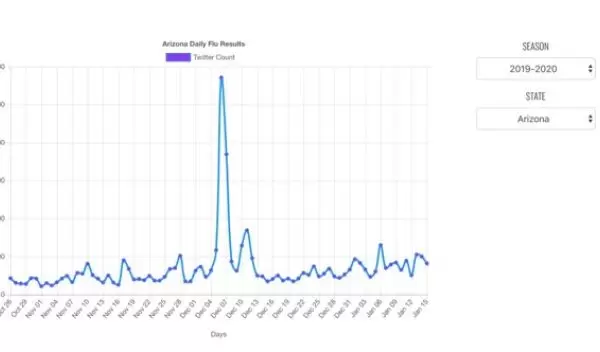
Twitter leading to new way of tracking and predicting virus outbreaks
Researchers at Arizona State University are developing a flu-tracking system using Twitter. The scientists published their results in the International Journal of Environmental Research and Public Health.
The team is using analyses of Twitter data along with mathematical equations to offer real-time results on flu spread. The work is funded by the National Science Foundation.
Despite advancements in medical technology and vaccines, emerging and reemerging epidemics such as SARS, avian influenza, Ebola and Zika continue to pose tremendous threats.
Early detection and immediate response are essential, scientists say. However, in many cases, current methods and algorithms for epidemic detection cannot match the wealth of social media data available today. These data provide an opportunity to develop improved epidemic surveillance systems.
This project is developing a new framework for early detection of epidemic outbreaks based on real-time geotagged Twitter data. It combines the expertise of scientists in mathematics and computer science to develop new algorithms for faster detection (near real-time and localized) of outbreaks.
The team, led by Feng Wang of Arizona State, believes the project will yield accurate results and offer reliable information on future outbreaks.
If scientists have a tool that works accurately, it can give a strong signal of an outbreak early on. "NSF support of projects like this demonstrates the power of mathematics to tackle national health challenges like the recent coronavirus outbreak," says Juan Meza, director of NSF's Division of Mathematics.
The research is also funded by the National Geospatial Intelligence Agency.


